There’s an acrid smell in the air and an unsettling crunch underfoot as we step over the metallic black and gold detritus of war. Ahead of us, framed by tree branches amputated by tank shells and mortar fire, the sky is reflecting brilliantly on the shimmering flood waters.
After negotiating more than a dozen army checkpoints within the thick forests of Kyiv’s outer boundary, we have reached the flooded village of Demydiv on the Irpin River and the long-lost wetland basin, which has returned after the dam was opened by Ukrainian troops defending the capital from Russian army units, and was later struck by a missile.
The breaching of the Irpin dam at the end of February held back the Russian soldiers and tanks, and reflooded 13,000 hectares (32,000 acres) of wetlands that were drained by the Soviets in the 1960s.
Until the outbreak of war, the floodplain was due to become the foundations of a massive new housing development. But with the waters possibly back for good, the future of the fragile ecology – and that of local communities – is uncertain.
Local ecologist Volodymyr Boreyko is calling for the Irpin River to be given the title of “Hero River”, and for Ukraine to follow the precedent set by Ecuador in 2008, when it became the first country in the world to recognize the rights of nature in its constitution.
“I think the Irpin River should be awarded the title of ‘Hero River’ and be given strong environmental protections, because this year the Irpin, in tandem with the UAF [Ukrainian armed forces] and territorial defense forces, played one of the most important roles in the defense of our capital for the last 1,000 years,” says Boreyko.


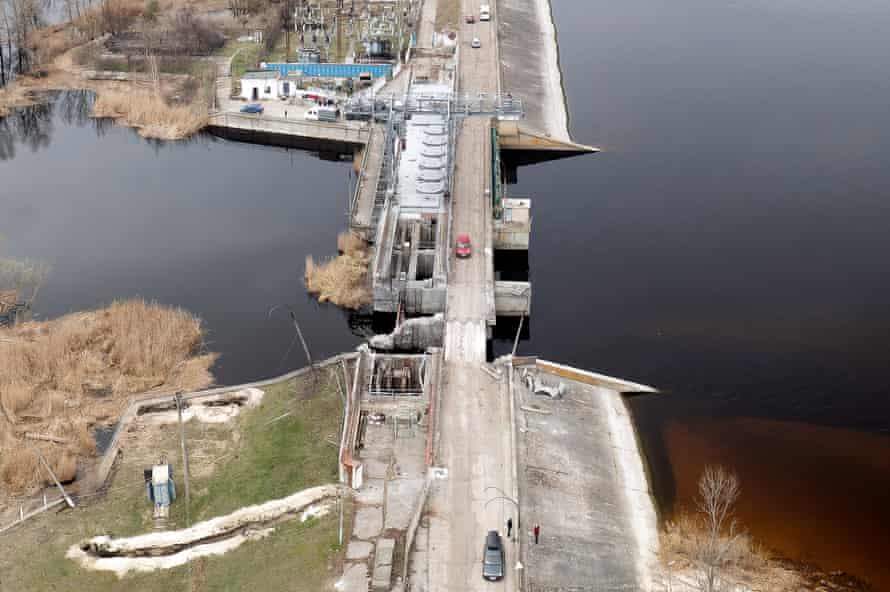

-
The damaged Irpin dam and the flooded landscape around the village of Demydiv, which remains underwater, although the waters are gradually receding
The large construction projects previously approved for the Irpin floodplain should be cancelled, he adds. The battle for Kyiv wasn’t the only time the Irpin has saved the city and, without it, he says, Kyiv would be left vulnerable to attack in the future.
“A thousand years ago, in the days of Kyivan Rus, the Irpin River repeatedly protected Kyiv from the north and north-west from the attacks of the Polovtsians and Pechenegs. It is 162km (101 miles) long, and its floodplain is so wide and swampy, enemy cavalry could not pass.
“If Putin had attacked in a year or two from now, the river Irpin would not have been able to defend the capital because its entire floodplain would have been cemented over and the river itself would be hidden in a collector and be no obstacle whatsoever to enemy tanks.”





-
The aftermath of the war in the town of Hostomel, which was occupied by Russian forces unable to push forwards due to the floods, during the assault on Kyiv
Before Soviet occupation, says Bohdan Prots, head of plant ecology at the National Museum of Natural History and director of the Center for Environmental Studies and Nature Conservation, the Irpin floodplain was a biodiversity hotspot, a kind of Ukrainian Amazon, with vast wetlands composed of bogs, swamps and marshes that thrived along riverbanks of thick reed beds and dunes of golden sand. “It was 5 meters deep in places, and full of giant catfish and sturgeon, as well as now-missing wetland bird species and birds of prey, like the white-tailed eagle.”

According to Prots, Soviet dams on the Irpin and Dnipro had a catastrophic impact on the ecosystems of the Irpin and its many tributaries that once thrived here. Many housing developments were built on the old floodplain, putting further pressure on the dying river ecosystem.
“Wetlands can’t be restored just like that,” says Prots. They [the Soviets] created huge environmental problems by damming and adding locks to the Irpin, which over the years steadily reduced the volume and flow velocity of water, which encouraged excessive algae that in turn reduced water oxygenation to the point where big fish could no longer breathe.
“Just because the water has returned it doesn’t mean we are looking at a new wetland rich in biodiversity. The ecology has been very badly degraded over many, many years. It would need many years for ecological improvements to be observed,” he adds.
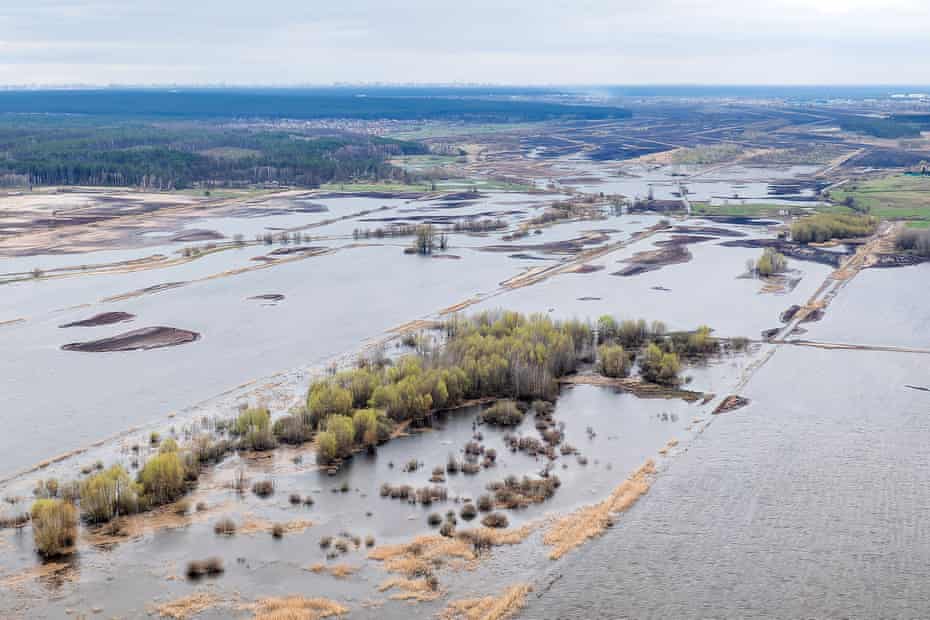
The sudden re-flooding of the old Kyiv-Irpin wetlands, which was also used as a first defense by Ukrainians defending Kyiv against the Germans in 1941, is very unlikely to have the kind of ecological benefits a carefully managed rewilding project would produce, he says.
“War doesn’t do rewilding – there was no research, there was no planning or mitigation. It might have helped us defend our capital, but before long there will be pressure to redrain this area. Can you imagine how many trillions of mosquitoes will be here this summer?”

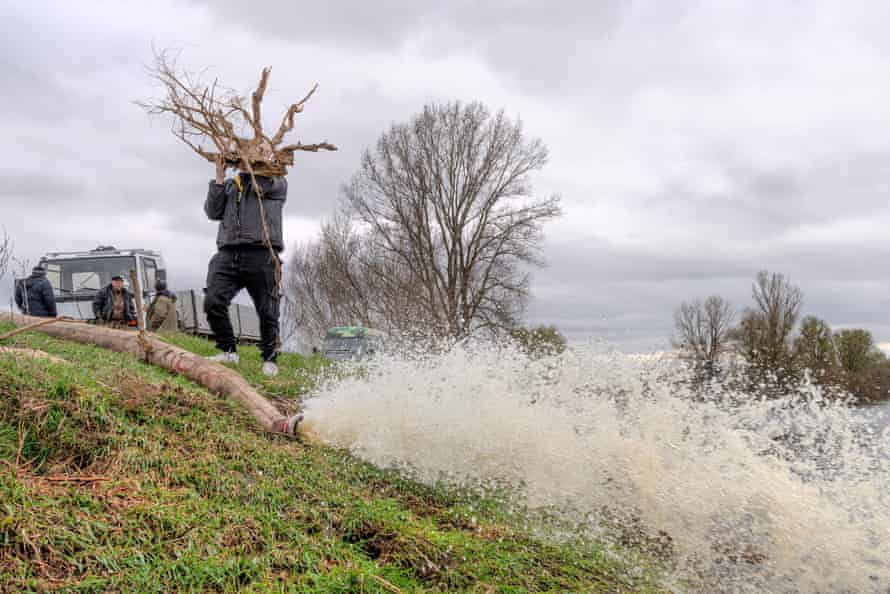
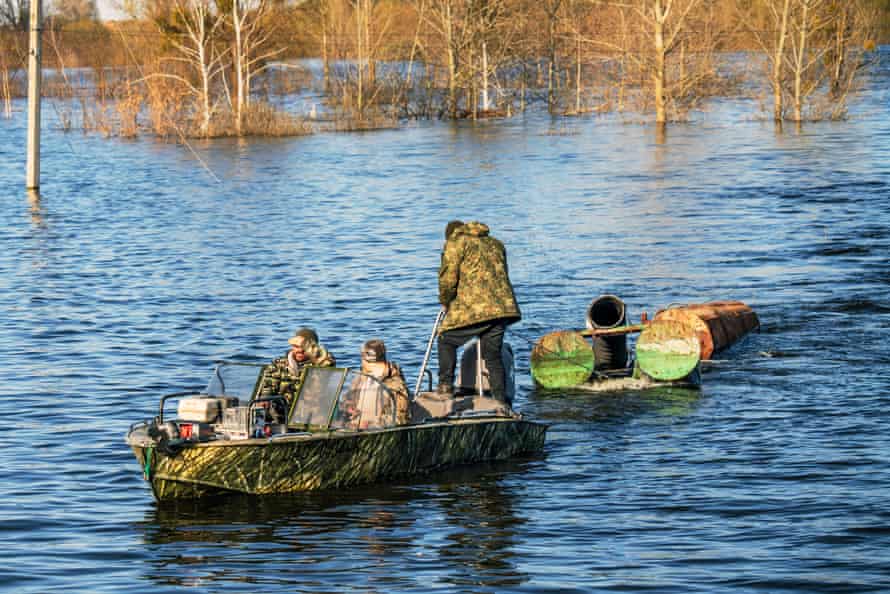
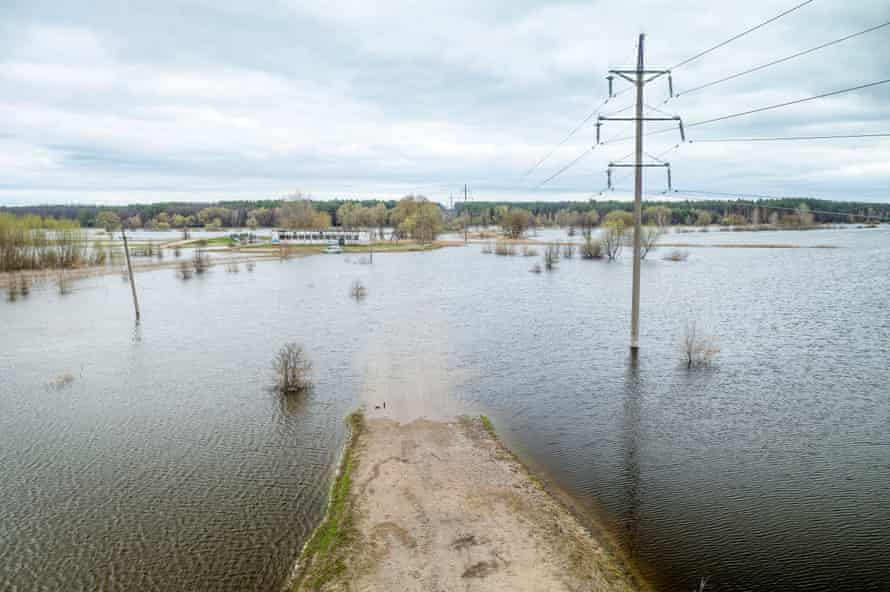
-
Clockwise from top left: The flooded village of Demydiv was mainly swamp and marshland until dams were built in the Soviet era; water is pumped from Demydiv village; the village of Rakivka is still without power; local municipal workers remove containers, possibly containing oil or chemicals
Prots says he thinks the local government will come under pressure to rebuild the Irpin dam. But while the war is still raging and the Kyiv region still littered with mines, it could be some time before any attempt could begin.
“I think there’s a good chance it [the dam] will be rebuilt eventually, but right now all our energies and thoughts are on defeating the invaders, because this is an existential issue for us. Until it is resolved and the Russians are kicked out of our lands, we can’t properly address this issue.”

Alexey Vasilyuk, biologist and founder and chairman of the Ukrainian Nature Conservation Group (UNCG), says he is hopeful the reflooded Irpin wetlands will remain. “First of all, these waters are now serving in the defense of Kyiv, so until we are sure Russia won’t try to seize Kyiv again, I don’t see how we can justify completely draining this area again. Secondly, I think it will be extremely difficult or maybe impossible to reverse what has happened.
“Hypothetically speaking, it might become a very good spawning ground for fish that have declined dramatically here over the last decades, and also become an important breeding ground for many species of rare wetland birds,” he says.
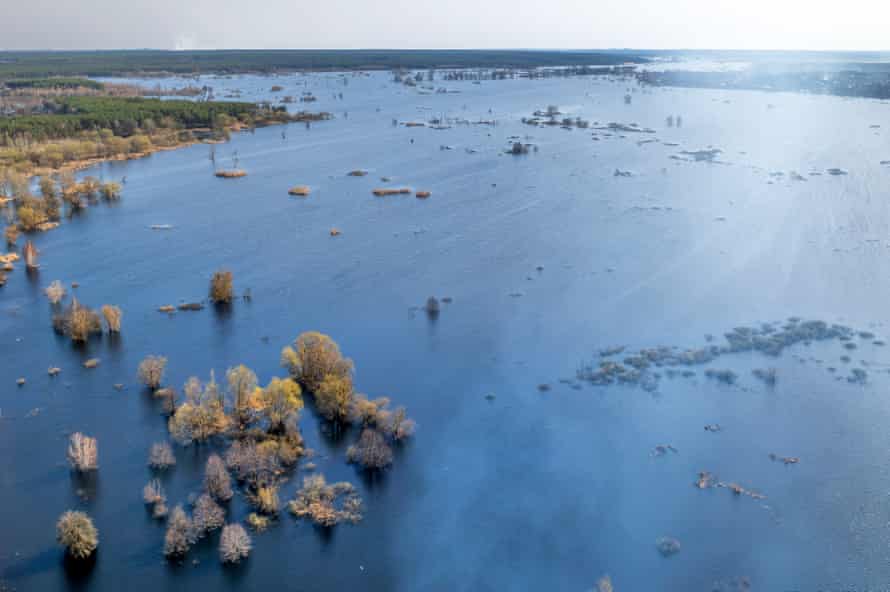
But, says Vasilyuk, the return of the water could pose as many problems as opportunities. “The local ecosystem of the Irpin River basin was in a bad way before the dam burst,” he says. “And now, a lot of Russian tanks and military equipment are underwater here. The mixing of chemicals and oils from fuel tanks with pollution from inundated landfills is a big threat,” he says.
“Right before the war, many parts of the land were sprayed with pesticides and fertilizers, so there are many threats for humans and wildlife that should be resolved.”
Despite the hazards and dangers, Vasilyuk remains optimistic that solutions can be found, and that Kyiv’s ancient wetlands may be back for good. “While the soldiers of the Ukrainian armed forces are fighting to stop the genocide of the Ukrainian people, we think that the environmental front should take care to prevent ecocide,” says Vasilyuk.
“This is possibly the most precious and important wetland in Ukraine, not because of its fragile or unique biodiversity, but because without this swampy barrier, the battle for Kyiv might have had a very different outcome.”
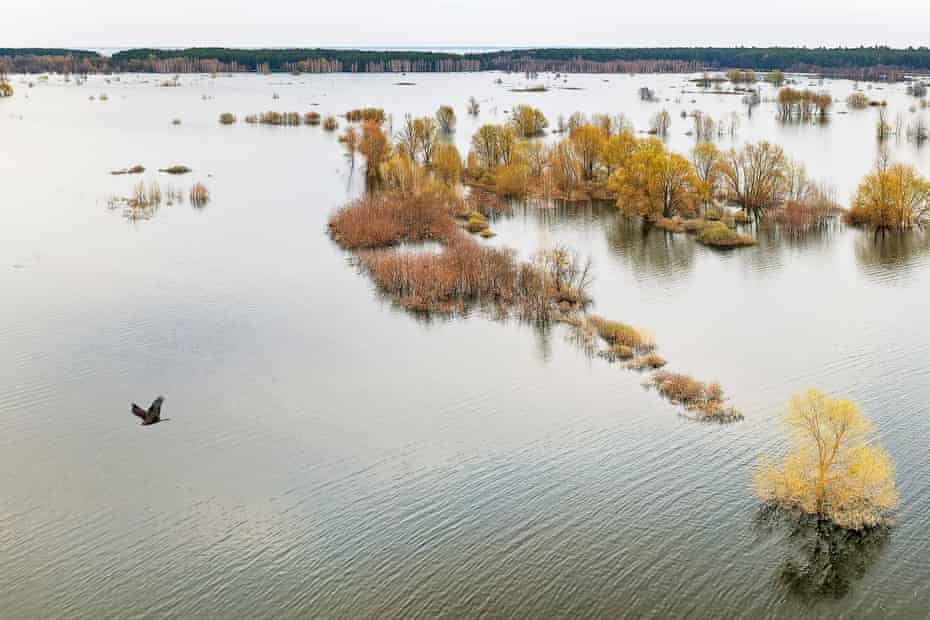
Find more age of extinction coverage here, and follow biodiversity reporters Phoebe Weston and Patrick Greenfield on Twitter for all the latest news and features
www.theguardian.com
George is Digismak’s reported cum editor with 13 years of experience in Journalism